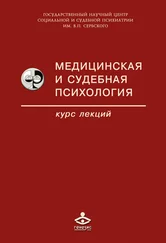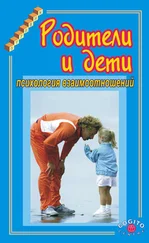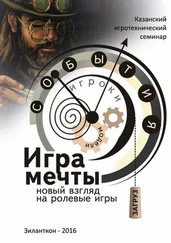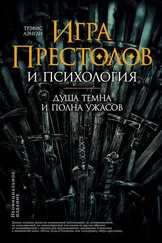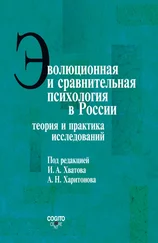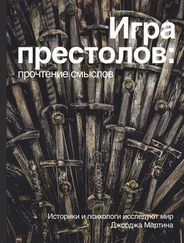Мартин Дж. Игра престолов. — М.: АСТ, 1999.
American Psychiatric Association (2013). Diagnostic and statistical manual of mental disorders (DSM-5) (5th ed.). Washington, DC: American Psychiatric Association.
Там же.
Olatunji, B. O., Cisler, J. M., & Deacon, B. J. (2010). Efficacy of cognitive behavioral therapy for anxiety disorders: A review of meta-analytic findings. Psychiatric Clinics of North America , 33 (3), 557–577.
Olatunji, B. O., Cisler, J. M., & Deacon, B. J. (2010). Efficacy of cognitive behavioral therapy for anxiety disorders: A review of meta-analytic findings. Psychiatric Clinics of North America , 33 (3), 557–577;
Paquette, V., Lévesque, J., Mensour, B., et al. (2003). "Change the mind and you change the brain": Effects of cognitive-behavioral therapy on the neural correlates of spider phobia. Neuroimage , 18 (2), 401–409.
Thorpe, S. J., & Salkovskis, P. M. (1995). Phobic beliefs: Do cognitive factors play a role in specific phobias? Behaviour Research and Therapy , 33 (7), 805–816.
Мартин Дж. Буря мечей. — М.: АСТ, 2003.
Smokowski, P. R., & Kopasz, K. H. (2005). Bullying in school: An overview of types, effects, family characteristics, and intervention strategies. Children and Schools , 27 (2), 101–110.
Glaser, D. (2000). Child abuse and neglect and the brain — a review. Journal of Child Psychology and Psychiatry , 41 (1), 97–116.
Craig, W. M. (1998). The relationship among bullying, victimization, depression, anxiety, and aggression in elementary school children. Personality and Individual Differences , 24 (1), 123–130;
Smokowski, P. R., & Kopasz, K. H. (2005). Bullying in school: An overview of types, effects, family characteristics, and intervention strategies. Children and Schools , 27 (2), 101–110.
Smokowski, P. R., & Kopasz, K. H. (2005). Bullying in school: An overview of types, effects, family characteristics, and intervention strategies. Children and Schools , 27 (2), 101–110.
Там же.
Мартин Дж. Пир стервятников. — М.: АСТ, 2008.
Мартин Дж. Игра престолов. — М.: АСТ, 1999.
Kaplan, S. J., Pelcovitz, D., & Labruna, V. (1999). Child and adolescent abuse and neglect research: A review of the past 10 years. Part I: Physical and emotional abuse and neglect. Journal of the American Academy of Child and Adolescent Psychiatry , 38 (10), 1214–1222.
Lew, H. L., Vanderploeg, R. D., Moore, D. F., et al. (2008). Overlap of mild TBI and mental health conditions in returning OIF/OEF service members and veterans. Journal of Rehabilitation Research & Development , 45(3), xi;
Langlois, J. A., Rutland-Brown, W., & Wald, M. M. (2006). The epidemiology and impact of traumatic brain injury: A brief overview. Journal of Head Trauma Rehabilitation , 21 (5), 375–378.
León-Carrión, J., De Serdio-Arias, M. L., Cabezas, F. M., et al. (2001). Neurobehavioral and cognitive profile of traumatic brain injury patients at risk for depression and suicide. Brain Injury , 15 (2), 175–181.
Мартин Дж. Игра престолов. — М.: АСТ, 1999.
Andelic, N., Sigurdardottir, S., Schanke, A. K., Sandvik, L., Sveen, U., & Roe, C. (2010). Disability, physical health and mental health 1 year after traumatic brain injury. Disability and Rehabilitation , 32 (13), 1122–1131.
Cantu, R. C. (2001). Posttraumatic retrograde and anterograde amnesia: Pathophysiology and implications in grading and safe return to play. Journal of Athletic Training , 36 (3), 244.
McAllister, T. W., Flashman, L. A., McDonald, B. C., & Saykin, A. J. (2006). Mechanisms of working memory dysfunction after mild and moderate TBI: Evidence from functional MRI and neurogenetics. Journal of Neurotrauma , 23 (10), 1450–1467;
Vakil, E. (2005). The effect of moderate to severe traumatic brain injury (TBI) on different aspects of memory: A selective review. Journal of Clinical and Experimental Neuropsychology , 27 (8), 977–1021.
Langlois, J. A., Rutland-Brown, W., & Wald, M. M. (2006). The epidemiology and impact of traumatic brain injury: A brief overview. Journal of Head Trauma Rehabilitation , 21 (5), 375–378.
Мартин Дж. Игра престолов. — М.: АСТ, 1999.
Midorikawa, A., & Kawamura, M. (2015). The emergence of artistic ability following traumatic brain injury. Neurocase , 21 (1), 90–94.
Takahata, K., Saito, F., Muramatsu, T., et al. (2014). Emergence of realism: Enhanced visual artistry and high accuracy of visual numerosity representation after left prefrontal damage. Neuropsychologia , 57, 38–49.
McGonigal, K. (2015). The upside of stress: Why stress is good for you, and how to get good at it. New York, NY: Penguin.
Franco, Z. E., Blau, K., & Zimbardo, P. G. (2011). Heroism: A conceptual analysis and differentiation between heroic action and altruism. Review of General Psychology , 15 (2), 99.
Там же.
Мартин Дж. Битва королей. — М.: АСТ, 2001.
Post, S. G. (2005). Altruism, happiness, and health: It's good to be good. International Journal of Behavioral Medicine , 12 (2), 66–77;
Schwartz, C., Meisenhelder, J. B., Ma, Y., & Reed, G. (2003). Altruistic social interest behaviors are associated with better mental health. Psychosomatic Medicine , 65 (5), 778–785.
Там же.
King, B. (1996). Lustmord: The writings and artifacts of murderers. Burbank, CA: Bloat.
Ressler, R. K., & Schachtman, T. (1992). Whoever fights monsters. New York, NY: St. Martin's.
Seaman, D., & Wilson, C. (1990). The serial killers: A study in the psychology of violence. London, UK: Virgin.
Ressler, R. K., Burgess, A. W., & Douglas, J. E. (1992/1995). Sexual homicide: Patterns and motives. New York, NY: Free Press.
Там же.
Мартин Дж. Танец с драконами. — М.: АСТ, 2013.
Macdonald, J. M. (1963). The threat to kill. American Journal of Psychiatry , 120 (2), 125–130.
Weatherby, G. A., Buller, D. M., & McGinnis, K. (2009). The Buller-McGinnis model of serial-homicidal behavior: An integrated approach. Journal of Criminology and Criminal Justice Research and Education , 3 (1). Scientific Journals: http://www.scientificjournals.org/journals2009/articles/1441.pdf.
Читать дальше
Конец ознакомительного отрывка
Купить книгу

